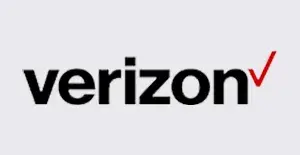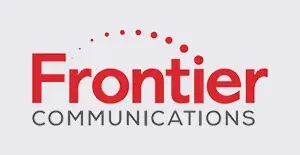According to a recent Pew Research Center survey, only 72% of rural residents in the U.S. have a home internet connection - which makes it difficult to find a quality internet connection in many rural areas. This number is compared to 79% in suburban areas and 77% in cities.
It's expensive for internet providers to expand internet infrastructure to rural areas, and despite federal incentives, there are many places where slower satellite and DSL connections are the only options.
The lack of availability of high-speed internet in rural and low-income areas is a major problem, but there is hope that it will improve in the next few years. The U.S. government and major ISPs are investing billions of dollars to close the digital divide, and some of the most promising changes include the deployment of satellite internet, the Emergency Broadband Benefit (EBB) program, and the recently passed infrastructure bill that includes $65 billion for broadband expansion.
Popular Rural Internet Providers
How we evaluated rural internet providers ?
Finding reliable internet in rural areas can feel like searching for a four-leaf clover. But fear not, fellow explorer! Here's a peek behind the curtain at how we evaluate rural internet providers, ensuring you get the best connection for your buck:
- Availability Reigns Supreme: In rural areas, simply having access is a win. We prioritize providers with the widest coverage, ensuring you're not left out in the connectivity cold.
- Speed Matters, But So Does Consistency: While lightning-fast speeds are great, consistent speeds are crucial. We evaluate providers based on both advertised speeds and real-world user experiences to ensure a reliable connection.
- Data Caps: Friend or Foe? Data caps can be a deal-breaker for rural users. We analyze data allowances, throttling policies, and providers offering unlimited data options to fit your usage needs.
- Price Points: Finding the Value Sweet Spot: Rural internet shouldn't break the bank. We assess plan costs, installation fees, and equipment rentals to find providers offering the best value for your hard-earned money.
- Customer Service Scrutiny: Tech troubles are inevitable. We evaluate provider customer service based on responsiveness, expertise, and ability to solve problems effectively, ensuring you're not left hanging when you need help.
- Bonus Factor: Technology Transparency: Not all rural internet is created equal. We delve into the technology behind each provider's service (DSL, satellite, fixed wireless) to understand its strengths and limitations, helping you choose the best fit for your location and needs.
By considering these key factors, we aim to provide you with a clear picture of rural internet providers, empowering you to make informed decisions and finally conquer the connectivity challenge!
Rural internet technology types
Living in a rural paradise shouldn't mean sacrificing your connection to the digital world. Here's a listicle exploring the various internet technology types available in rural areas:
- DSL (Digital Subscriber Line): A familiar friend, DSL utilizes existing phone lines to deliver internet access. It offers a decent balance of affordability and speed, making it a good option for basic internet needs like browsing and email. However, speeds can be lower compared to other options, and availability might be limited in very remote locations.
- Satellite Internet: This technology beams internet signals down from satellites in space, making it a solution for even the most remote areas. While offering widespread availability, satellite internet comes with drawbacks. Latency (signal delay) can be high, making real-time applications like gaming challenging. Additionally, data caps are often in place, and weather conditions can affect signal strength.
- Fixed Wireless Internet: This option utilizes cell towers or fixed antennas to transmit internet signals directly to your home. It offers a good balance of speed, affordability, and installation ease compared to traditional cable setups. However, availability can vary depending on the provider's network coverage. Distance from towers can also impact signal strength and speed.
- Fiber Optic Internet: The holy grail of internet speeds, fiber optic cables transmit data using light pulses, offering incredibly fast and reliable connections. But the good news comes with a caveat – availability in rural areas is scarce due to the high cost of infrastructure installation.
- Mobile Internet (via Cellular Network): While not a standalone solution, leveraging your existing mobile data plan can be an option for basic internet needs in rural areas. However, data caps and potential throttling can limit extensive internet usage. Additionally, signal strength can fluctuate depending on your location.
How rural internet will improve in coming years
The digital age shouldn't leave rural communities behind. Here's a glimpse into the exciting advancements that could revolutionize rural internet access in the coming years:
The Rise of 5G Fixed Wireless: 5G technology promises significantly faster speeds and broader coverage compared to previous generations. 5G fixed wireless could become a game-changer for rural areas, offering a more reliable and high-speed option than traditional fixed wireless solutions.
Satellite Innovation: The future of satellite internet is looking brighter. New constellations of low-earth orbit satellites are being launched, aiming to reduce latency (signal delay) and potentially offering speeds rivalling fibre optic. This could be a major leap forward for internet access in remote areas.
Government Initiatives: Recognizing the importance of rural connectivity, governments are increasingly investing in infrastructure projects. This includes expanding broadband access through initiatives like fibre optic cable deployment in underserved regions.
Public-Private Partnerships: Bridging the digital divide often requires collaboration. Partnerships between private internet service providers and government entities could accelerate infrastructure development and bring affordable internet solutions to rural communities.
Focus on Alternative Technologies: While fibre optic offers the ultimate speed, alternative technologies like fixed wireless and improved satellite options are likely to play a crucial role. These advancements could provide more cost-effective solutions for bringing reliable internet access to rural areas.
Increased Awareness and Demand: With the growing importance of internet access for education, healthcare, and economic opportunities, rural communities are actively seeking solutions. This rising demand will push for continued innovation and investment in rural internet infrastructure.
The Road Ahead:
While challenges remain, the future of rural internet is brimming with potential. Technological advancements, combined with increased focus and collaboration, are paving the way for a more connected rural landscape. This will open doors to new opportunities and bridge the digital divide, ensuring everyone has access to the vast potential of the online world.
Alternative options for rural internet service
Living in a rural paradise shouldn't mean sacrificing your connection to the world. While traditional cable or fibre optic internet might be scarce, several alternative options can bring you online:
Fixed Wireless Internet: This service utilizes cell towers or fixed antennas to transmit internet signals directly to your home. It offers a good balance of speed, affordability, and ease of installation compared to traditional cable setups.
Pros: Fast speeds (up to 1 Gbps with some providers), quick installation, ideal for underserved areas.
Cons: Limited availability, weather dependence, potential data caps.
Satellite Internet: Reaches even the most remote locations by bouncing signals off satellites in space.
Pros: Widespread availability, good for basic browsing and email.
Cons: High latency (signal delay), data caps, and weather can affect signal strength.
Mobile Internet (via Cellular Network): Leverage your existing mobile data plan for basic internet access.
Pros: Readily available in most areas, convenient option for occasional use.
Cons: Data caps and throttling can limit extensive use, and signal strength can fluctuate.
Community Internet Initiatives: Some rural communities band together to create their own internet solutions. This could involve fixed wireless networks or partnerships with local internet service providers (ISPs).
Pros: Provides a sense of community ownership, and potentially more affordable options.
Cons: Availability depends on local initiatives, and may require upfront investment from residents.
Microwave Internet: Uses point-to-point microwave towers to transmit internet signals over long distances. Often used in rural areas with limited infrastructure.
Pros: Can cover long distances, potentially faster speeds than satellite internet.
Cons: Limited availability, requires line-of-sight between towers, can be expensive.
TV White Space Internet: Utilizes unused frequencies in the TV spectrum to deliver internet access. Still in its early stages but holds promise for rural areas.
Pros: Promising technology for underserved regions, potentially avoids spectrum congestion issues.
Cons: Limited availability, the equipment can be expensive, and regulatory hurdles exist.
FAQ about Rural Internet Service
- What types of internet are available in rural areas?
Common internet options in rural locations include DSL, satellite, fixed wireless, dial-up, and in some areas fiber optic internet. Availability can be limited compared to urban areas. - Are rural internet speeds slower?
Yes, rural internet speeds tend to be slower on average than urban speeds. This is due to the challenges of running infrastructure over long distances to sparsely populated areas. - Do rural internet plans have data caps?
Many rural internet service providers implement data caps, especially on satellite and wireless plans. These caps can make streaming video or gaming difficult. - Is rural internet more expensive?
Rural internet can be more expensive per Mbps of speed compared to urban pricing. The costs of deploying infrastructure over wider areas contributes to higher rates. - Are there any assistance programs for rural broadband?
Yes, the Federal Communications Commission has initiatives like the Rural Digital Opportunity Fund to incentivize internet providers to build out networks in underserved rural regions.


